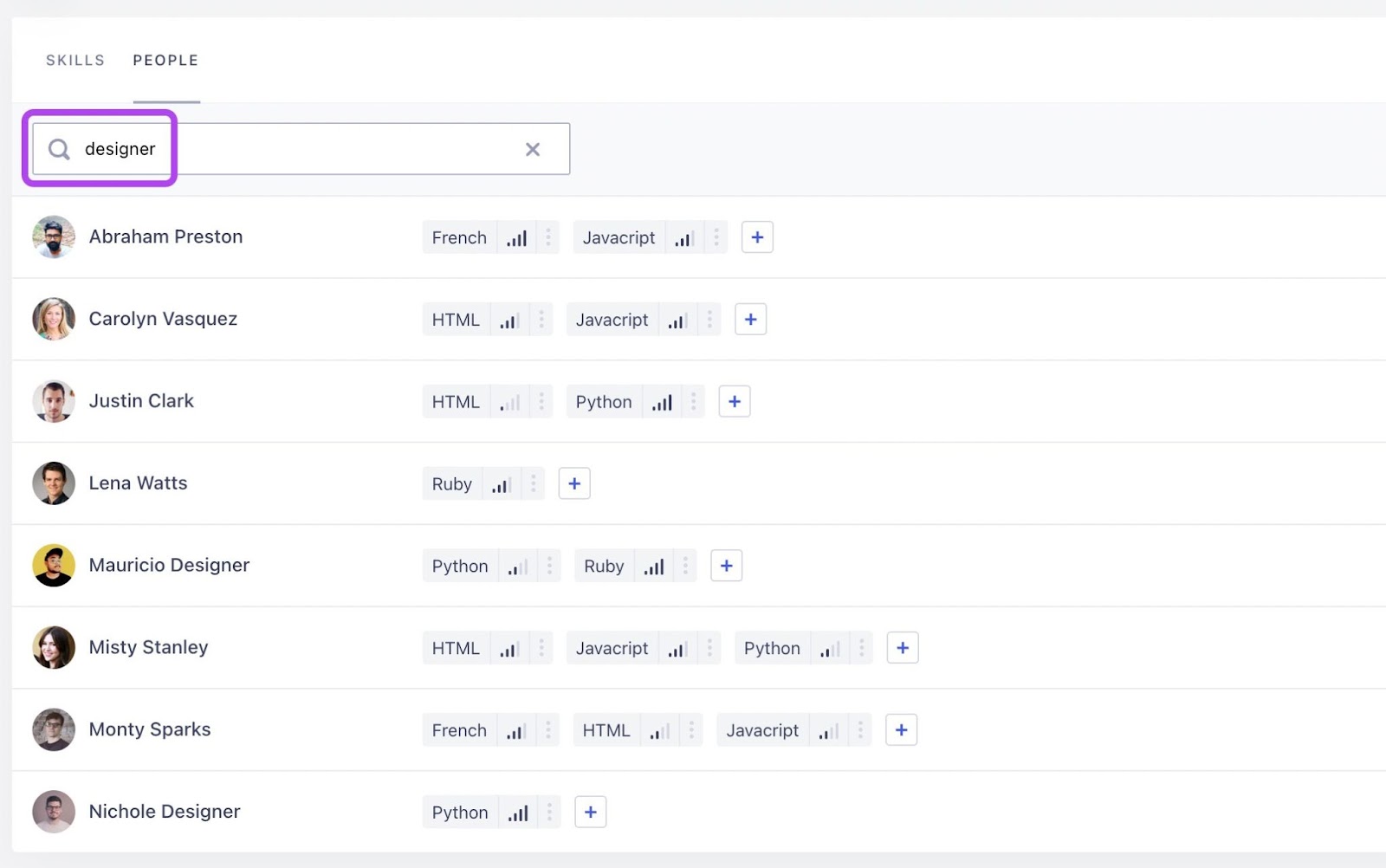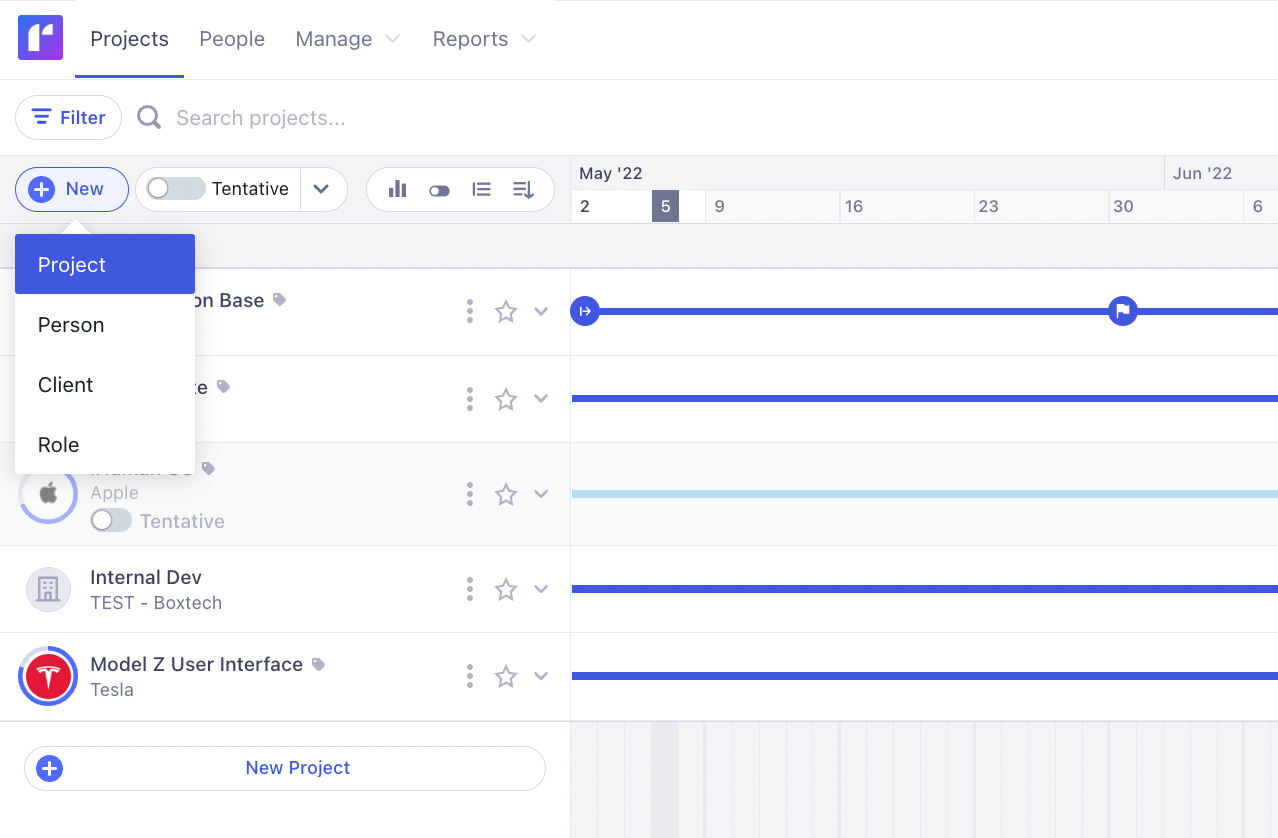Workstreams make it easier to plan, monitor, and execute large projects. Here are examples and best practices you need to know. And why workstream visualization is the way to go.

Large projects are hard to manage. The people and activities involved - and their sheer scale - makes them extremely complex. It's one of the reasons large projects can be prone to failure.
Workstreams break down large projects into smaller parts. These workstreams are highly focused - with their own goals and objectives - and making it easier to plan, monitor and execute their activities.
And when each of the workstreams is complete, your large project is too. Often with better outcomes than a project that divide-and-conquer using the workstream method.
Workstreams don't eliminate complexity. But they do make it easier to manage. Especially when you visualize your workflows so everyone can easily see the big picture and their place within it.
Let's take a closer look.
A workstream is a way to divide and conquer large projects. Each workstream is a smaller, self-contained project in its own right. It groups together related tasks - tasks that can be productively completed separately from other tasks, but which will move the overall project forward.
Some projects are naturally divided up into workstreams — a website design, for example, might have separate people working on different features so that each team can focus on whatever tasks they're best at. For other projects, like those where people are collaborating on creating software, you may choose to create sub-teams.
Workstreams might be completed in a linear way - for example, you might have a workstream focused on research, one on development, and one on delivery. Or they might run concurrently - for example, one workstream working on the copy for a website launch and another on the design.
➡️ Related: 15 Best Project Management Charts to Visualize Project Operations
Let’s start easy.
In simple terms, anything that can be considered a project will almost certainly consist of workstreams. Building a house is one easy example where you can discern multiple workstreams:
So workstreams are those meaningful chunks of work you need to get through to finish a milestone. They account for all the activities you need to do to get to the next stage in your project scope. In a way, they help you make sure you never bite off more than you can chew.
When you’re managing a professional services business, those workstreams are just as relevant. For example, if you get a client who wants you to build their website from the ground up, it’s not just design that comes into play. Instead, you need to engage several teams and build their workflows around the core goal.
Here are the workstreams you could generally have on such a project:
But there is an important thing to note here: projects are rarely a linear process. More often than not, it’s a to-and-fro plus give-and-take situation. And for those processes not to get chaotic and tangled, you need to build workstreams.
We’ve hinted at some of the benefits of workstreams already, but let’s spell them out.
Organizing your large project into smaller workstreams makes it easier to plan, manage, monitor and execute your project overall. Workstreams provide a logic to how large projects are structured and delivered, including their own timeframe, goals, and KPIs.
Creating smaller, more focused workstreams gives team members more ownership of their part in the project and increases employee engagement. In a smaller team - with clearly defined, specific KPIs - people can understand their personal contribution to the bigger picture.
Many projects fail due to lack of visibility - into responsibilities, risks, and progress. Breaking work down into smaller components - and tracking their progress - increases visibility into the overall progress of a larger project.
Breaking projects down into their component parts makes it easier to plan large-scale endeavours, understand their requirements, and forecast schedules and budgets more accurately. This means you’re less likely to go over-time and over-budget overall.
Workstreams support parallel working, where teams work concurrently on their respective tasks. This can help you complete your overall project faster than if you work in a linear fashion, and reduces the time resources might be idle, waiting for work in a more sequential project plan.
Workstreams make it easier to pinpoint resource needs at specific points in the larger project, and allocate people efficiently. This reduces the risk of overallocation or underutilization of resources. Resource allocation defines how successful and profitable your project is going to be.
Each workstream has its own KPIs, schedule, and budget. This makes it is easier to monitor and manage progress - and mitigate issues before they become a threat to the larger project. This reduces the risk of cost overruns and project delays.
Breaking down projects into smaller workstreams means you can celebrate milestones along the way. This keeps staff engagement and morale up - higher than trudging (seemingly endlessly) to the distant finish line of a large project.
This is the biggie. The benefits above combine to make your projects more successful overall - thanks to lower risk, more accurate forecasting, efficient resource utilization, higher employee engagement, and more.
Before you can divide and conquer a project, you need a birds-eye overview of the full project. It’s only when you’re clear on the project requirements and how each phase connects with another that you can break the project down into workstreams.
Workstreams can be entirely self-contained. But often there are dependencies between them. For instance, X needs to be completed before Y can start. Map and visualize this flow, to reduce the risk of bottlenecks.
With a project plan ready, now is the time to build out the detail of who responsible for doing what - accomplish this by dividing the project into workstreams. Then, set realistic goals and objectives for each workstream to ensure each group of tasks is focused. This also makes sure all workstream members understand the project scope and their particular role.
Alongside goal setting, determine what success looks like for each workstream by determining milestones and KPIs to hit.
To keep things realistic, make sure all milestones are backed by a timeline that integrates into an overview of all workstreams. This helps everyone easily understand what’s happening and when and guarantees project progress while keeping risks at bay.
Needless to say, it's best practice to reflect on progress (KPIs hit, for example) regularly.
To ensure each workstream delivers results smoothly and by the determined timeline, it’s essential the project manager and/or workstream lead evaluate associated risks.
Remember though: risk assessment should never be done in silos. In fact, managers heading workstreams should coordinate on how a risk affecting a workstream can potentially impact another workstream. They should also work together to identify tactics to mitigate risks.
Further reading ➡️ Project Risk Management: A Guide to Mitigating Risks in 5 Steps
Much as risk management should never be done in siloes, siloed workstreams can amplify project risks owing to a lack of joined-up thinking.
Lack of coordination between different workstreams can also impact the quality of deliverables. This is why setting a communication plan is critical to encourage the free flow of information.
Determine communication channels to use alongside update frequency. Ensure you get and share regular status reports.
Additionally, host regular meetings where all workstream managers/members discuss the project to understand how far along the project has progressed on the whole.
Once parent project plan and workstream plans, goals, KPIs, and milestones are set, bring in the expertise needed to work on each workstream.
Ideally, you should have a skills inventory to identify the best resources to dedicate to each workstream. If you use Runn, resource allocation using this inventory should be fairly simple.
All you’ll need to do is look up people in your skills inventory who have the expertise and availability to work on the workstreams you’ve chalked.
Prefer assigning tasks by role? Go to the People tab in your Runn dashboard and type the specific role you’re looking to allot work to. The robust resource management software will pull up the names you need:

Alongside sharing regular updates and encouraging knowledge sharing and collaboration, it’s essential you review progress for any needed adjustments.
This will be best executed as you regularly review workstream performance and gather feedback.
Keep in mind: plans change so make necessary adjustments (as needed) to improve overall project efficiency and effectiveness.
Aim to visualize everything — from the full project to individual workstreams — to chart out how workstreams are co-dependent and how each contributes to overall project progress.
Manually creating a project roadmap with individual workstream plans will need lots of interlinked spreadsheets though. Naturally, this hinders collaboration and prevents you from comprehensively visualizing the whole thing.
However, by using Runn’s Project Planner, you can see everything in a central base:

From here, set workstreams as well as assign resources to all projects. Here’s how:
Open by creating a project and add your clients (so they can track project progress).
If you’re already a Runn user who has various projects set up, you can create workstreams following the steps above, and then take these steps to add workstreams to the project from the main Runn dashboard:
In the same open project dashboard, go to Add Person or Placeholder from the left menu.
Next, select add a person by their role (click on the check mark beside their name) and then select a workstream from the drop-down menu above the individuals’ list.
.gif)
Follow the same steps to assign more work to the same person or to different people. One person can be assigned work in multiple workstreams across different projects.
Change of plans midway through the project? Want to assign more resources or different ones to specific workstreams?
Simply go to your Project Team tab in the project at hand. Then, select the person from the left side of your Runn dashboard menu, click Change Workstream, choose the new workstream from the option list, and hit Update to save.
For an overview of all the workstreams, go to Manage in the upper bar of Runn’s workspace.
Head down to click on Workstreams. This will open a page showing all your workstreams, regardless of projects.
You can add and remove (archive for now, not delete) workstreams here as well.
What’s more, you can view workstreams by people as well. For this, go to the People tab and click on the individual to see all the workstreams assigned to them.
Once you’ve set this up, feel free to do some scenario planning.
Scenario planning at Runn is your project fortune teller — will your workstreams go the way you plan them to go? Is your project feasible? Is the capacity of your entire team enough to cover all the workstreams planned? And if not, what would that mean for the overall project health?
If you're a project manager, you've probably encountered a situation where someone involved in the project doesn't have all the information they need to complete their workstream, or maybe you've been that person yourself.
Either way, it's a frustrating situation for everyone involved and it's easy to feel overwhelmed and disorganized as you try to make sense of everything on your own.
Getting your projects properly visualized is a sure way to keep your initiatives from sidetracking and always being able to say what happened in the past, what’s happening now, and where your projects are headed tomorrow.